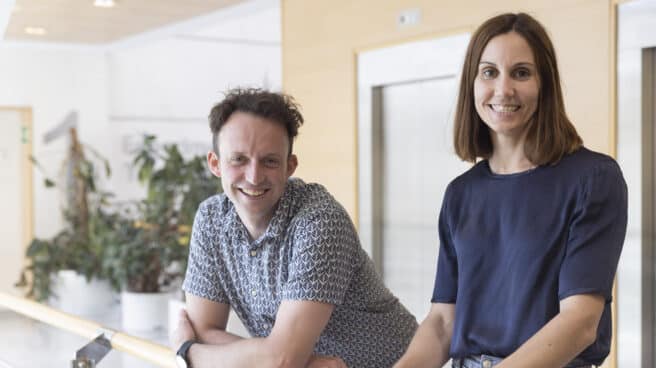

Jeff McIntyre, head of the CNIO Computed Oncology Group, and Barbara Hernando, CNIO Scientist.
Cancer develops when cells in the body stop behaving logically and begin to divide and change their genetic makeup out of control. This phenomenon is known as genome instability, and the higher it is, the more it is associated with serious tumors and higher mortality, so its treatment is more difficult.
A challenge for science, which today takes a step forward with a publication in a prestigious journal Nature Spanish discovery developed by scientists from the National Cancer Research Center (CNIO) in collaboration with British, Canadian, Belgian and German scientists.
“We have developed a method with which we can decipher and interpret the DNA of these complex tumors and thus choose the most optimal treatment for each patient,” explains Belen Hernando, one of the Spanish scientists involved in the study. co-led the project with Jeff McIntyre, head of the CNIO Computational Oncology Group.
The study analyzed the causes, diversity, and extent of chromosomal instability in 7,880 tumor samples from 33 different types of cancer. Later, they linked them to the characteristics of the disease they belonged to and turned them into patterns. These patterns, in turn, were associated with information about their possible reactions to the drugs that are usually used against them.
The scientist compares in conversation with Independent, their work with the work of detectives who must solve the crime. “When the coroner arrives, they find a scene with many mixed prints. What he does is analyze the fingerprints, separate them and thus be able to determine who it was and solve the crime. We have many traces or patterns in tumors, and we separate them to see the mechanisms that left these traces in the tumor, and in this way we manage to treat the causes and not the symptoms of the tumor.”
And the fact is that one of the greatest achievements in the treatment of cancer in recent years has been the so-called precision medicine. But, Hernando explains, “only 5% of patients benefit from this personalized medicine,” explains Hernando. The reason is that in the most serious tumors there is not one mutated gene, but a whole genetic chaos caused by chromosomal instability. With this new method, scientists predict that the samples will allow more effective treatment of this type of cancer. “We estimate that up to 80% of cancer patients will benefit from this discovery, especially those with cancers with higher mortality rates such as ovarian, pancreatic, lung, or esophageal cancer,” Hernando said. For this, 80% of patients with many mutations can benefit from individualized treatment.
Thus, these patterns will be biomarkers that will allow a patient to make a choice between one or another therapy with a greater guarantee of effectiveness. Scientists identify the method with the “detection traces in the genome of the tumor, which allows us to recognize the mutational mechanism that causes the development of the tumor, and through this allows us to identify the vulnerability of these tumors, against which the treatment will be directed. On the one hand, this allows you to make a more accurate diagnosis, and on the other hand, to choose the best treatment.
Florian Markovets, a senior fellow at the Cambridge Institute for Cancer Research in the United Kingdom, co-led the study with McIntyre. They all created Tailor Bio, a company based in this country, which created a patent for the described method, which is attached to another patent they had previously developed.
The aim of the researchers is for the advances to reach clinical practice as soon as possible. “Our idea is that it can be used in bulk. The sample required is that obtained from a biopsy, which is usually performed in hospitals. We can sequence this material with technology that doesn’t have to be high resolution, so even if it’s been degraded, that’s enough. After that, you will need a bioinformatician to analyze the data, but we have developed software that anyone can download,” explains Hernando.
As for the dates, Hernando distinguishes between “using a method to determine the cause of a tumor that can help the doctor decide on the type of treatment,” which could come soon thanks to a company created by scientists. And on the other hand, that it becomes a “treatment prediction tool”. “It’s been tested in vitro [con células en laboratorio] and it needs clinical trials so that it can be used as an additional tool for treatment selection,” he concludes.
Source: El Independiente